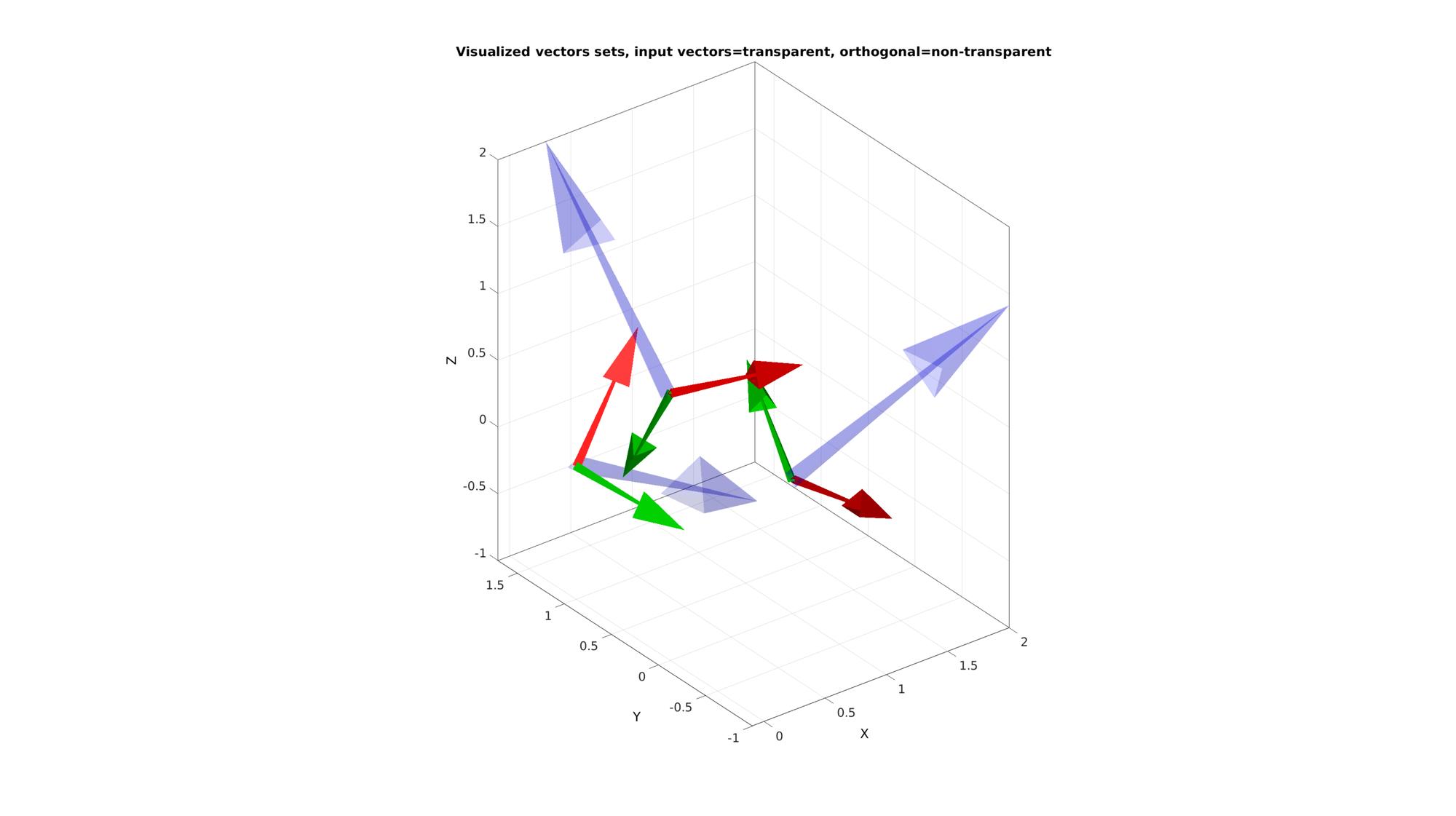vectorOrthogonalPair
Below is a demonstration of the features of the vectorOrthogonalPair function
Contents
clear; close all; clc;
Syntax
[a,d]=vectorOrthogonalPair(f);
Description
Based on the input vector f this function generates the normalized output vectors a and d which are orthogonal to eachother and to f. This function can be useful for describing local element axis systems based e.g. in FEBio (whereby the input vector defaults to e3).
Examples
Example 1: Creating a triplet of mutually orthogonal vectors
Creating example vectors
P=eye(3,3); %Vector origins V=euler2DCM([0.25*pi 0.25*pi 0.25*pi]); %Input Vectors, rotated directions % V=eye(3,3); %Input Vectors, x,y,z axes
Compute mutually orthogonal sets using vectorOrthogonalPair
[a,d]=vectorOrthogonalPair(V);
Visualize the sets
cFigure; title('Visualized vectors sets, input vectors=transparent, orthogonal=non-transparent'); quiverVec(P,V,2,'b','none',1,0.2); quiverVec(P,a,1,'r','none',1,1); quiverVec(P,d,1,'g','none',1,1); % quiverVec(P,d,1,'k','none',1,1); axisGeom; camlight headlight; drawnow;


GIBBON www.gibboncode.org
Kevin Mattheus Moerman, [email protected]
GIBBON footer text
License: https://github.com/gibbonCode/GIBBON/blob/master/LICENSE
GIBBON: The Geometry and Image-based Bioengineering add-On. A toolbox for image segmentation, image-based modeling, meshing, and finite element analysis.
Copyright (C) 2019 Kevin Mattheus Moerman
This program is free software: you can redistribute it and/or modify it under the terms of the GNU General Public License as published by the Free Software Foundation, either version 3 of the License, or (at your option) any later version.
This program is distributed in the hope that it will be useful, but WITHOUT ANY WARRANTY; without even the implied warranty of MERCHANTABILITY or FITNESS FOR A PARTICULAR PURPOSE. See the GNU General Public License for more details.
You should have received a copy of the GNU General Public License along with this program. If not, see http://www.gnu.org/licenses/.